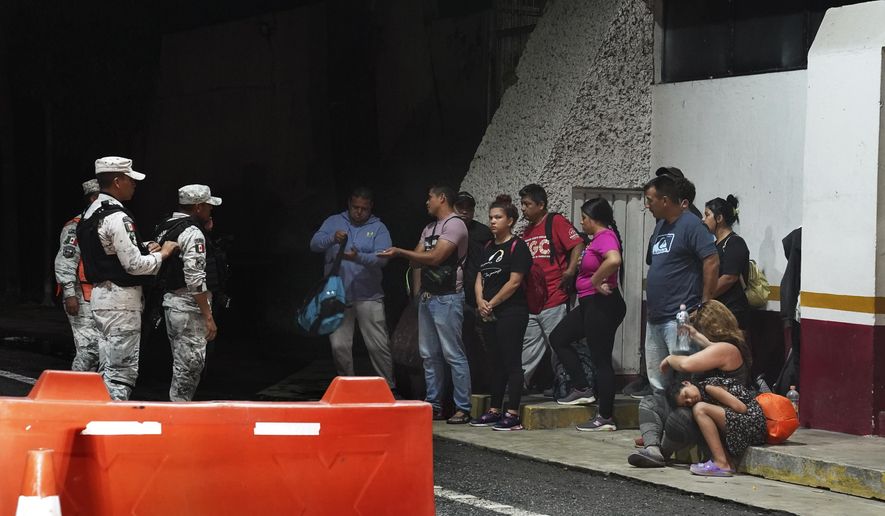TAPACHULA, Mexico — Mexican security and immigration authorities have stepped up patrols, highway checkpoints and raids in southern Mexico since the United States started expelling Venezuelan migrants last month.
The Mexican government has not said whether its enforcement actions near its border with Guatemala are related to the U.S. policy change, which effectively shuts the door to Venezuelans trying to enter the U.S. through Mexico, but the efforts have put migrants in this southern city on edge.
Authorities have also been more active in breaking up small migrant caravans that try to advance north from Tapachula.
For months, the government seemed to encourage small groups of migrants to leave Tapachula, to relieve the building pressure and frustration there. It established an immigration center that issues temporary documents 180 miles to the northwest in San Pedro Tapanatepec.
But a small caravan that was scheduled to leave Monday had only 100 migrants. And authorities broke up two small caravans that had left the previous week after letting them walk for about 90 miles.
Orley Castillo of Honduras has been living in Tapachula’s central park for a week with his 15-year-old son. In that time, he has seen National Guard and immigration agents pursuing migrants, including on one occasion when he and his son were detained until showing papers proving they had applied for asylum.
“Two consecutive days the Guard and immigration have come to run off the people because a caravan was supposedly going to form,” he said sitting in the park Wednesday.
Venezuelan Doris Medina and Ecuadoran Omar Montalván tried to ride public transportation vans town by town north from Tapachula, but within half and hour Montalván was detained at one of the highway checkpoints and taken to an immigration detention center. They had gotten around previous checkpoints by getting out of the vans and walking around the authorities.
Still, many are finding a way to move north. Thousands of migrants await temporary documents at the immigration center housed in large tents in San Pedro Tapanatepec.
Savi Arvey, senior policy adviser for the Migrant Rights and Justice Program at the Women’s Refugee Commission, visited the camp last week. She said there were an estimated 12,000 to 17,000 migrants waiting there for temporary immigration documents that limited migrants to moving around the state of Oaxaca.
On Wednesday, Humberto Parrazales, the mayor of San Pedro Tapanatepec, said he was going to ask federal officials to move the immigration camp out of his town. In a video message posted to his Facebook account, he said it had been challenging to provide basic services for so many people and the town had cooperated for as long as it could.
The Mexican agency that handles asylum applications does not have a presence at the camp, limiting migrants’ options, she said. Nongovernmental organizations, including her own, do not have access to government’s tents unlike at migrant camps in northern border cities.
Migrants sleep along the town’s main street, rent floor place from homeowners or stay inside the government’s tents, though immigration officials there denied that, Arvey said.
Some migrants try to use the documents to advance farther north, but risk having them torn up by authorities who then ship the migrants back south.
Arvey said immigration officials told her they were processing approximately 1,500 to 2,000 such documents per day, but migrants complained of lengthening waits. “We did speak to a number of people who had been there for a week to even a month,” she said.
Mexico’s National Immigration Institute did not respond to questions about activities at the camp.
Many of those waiting were Venezuelan migrants who remained confused about the Biden administration policy instituted last month that effectively closed the border to them. Venezuelans can apply for temporary entry to the United States from abroad if they meet a number of requisites, including having a U.S. sponsor.
“There needs to be a much greater humanitarian presence given how long, especially this has persisted,” Arvey said. “It seems like people are spending longer and longer there.”




Please read our comment policy before commenting.